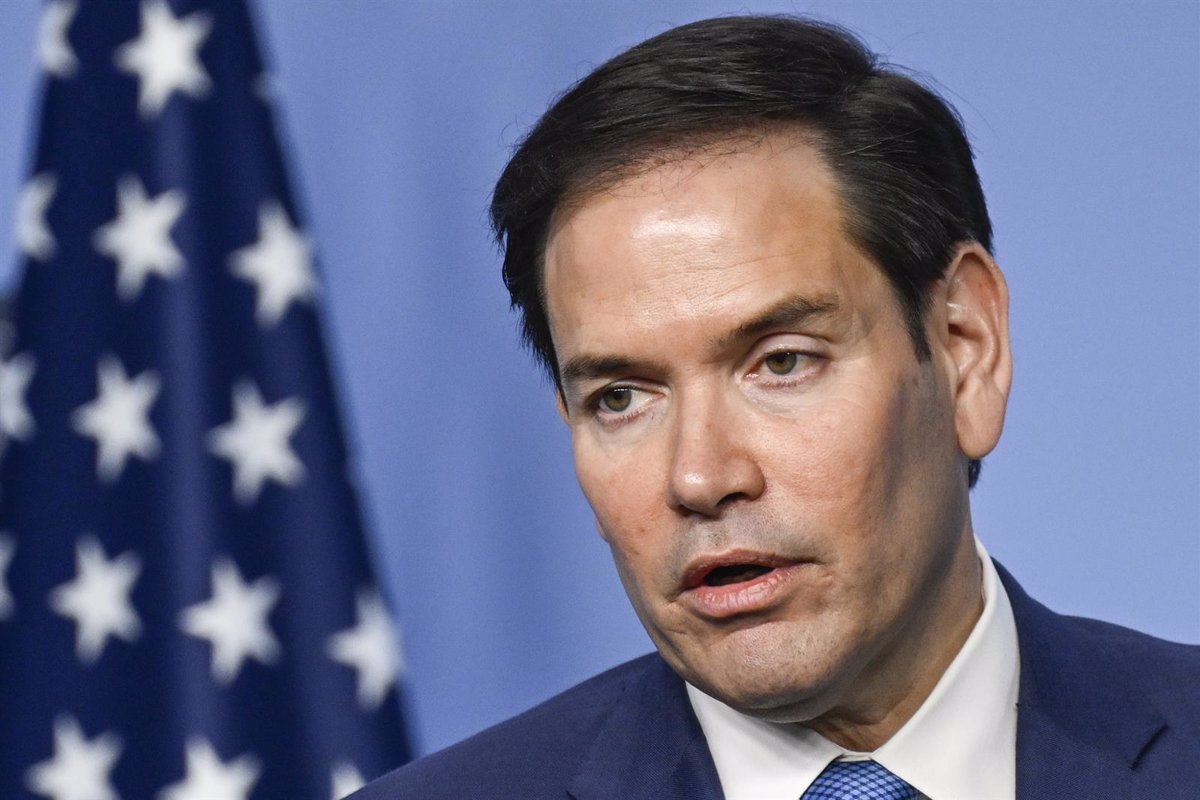US Global Tariffs Under Trump: An Overview Of Affected Products And Countries

Welcome to your ultimate source for breaking news, trending updates, and in-depth stories from around the world. Whether it's politics, technology, entertainment, sports, or lifestyle, we bring you real-time updates that keep you informed and ahead of the curve.
Our team works tirelessly to ensure you never miss a moment. From the latest developments in global events to the most talked-about topics on social media, our news platform is designed to deliver accurate and timely information, all in one place.
Stay in the know and join thousands of readers who trust us for reliable, up-to-date content. Explore our expertly curated articles and dive deeper into the stories that matter to you. Visit Best Website now and be part of the conversation. Don't miss out on the headlines that shape our world!
Table of Contents
US Global Tariffs Under Trump: An Overview of Affected Products and Countries
The Trump administration's imposition of tariffs on imported goods significantly reshaped global trade relations. This period, marked by aggressive protectionist policies, saw widespread impacts on various industries and countries. Understanding the scope and consequences of these tariffs is crucial for navigating the complexities of modern international commerce. This article provides an overview of the affected products and countries, examining the motivations behind these policies and their lasting effects.
Key Drivers Behind the Tariff Imposition
The Trump administration's justification for these tariffs centered on several key arguments:
- Protecting American Industries: A core tenet was safeguarding domestic industries, particularly steel and aluminum, from what were perceived as unfair trade practices and subsidized imports. The argument was that cheaper imports were harming American businesses and jobs.
- Reciprocity and Trade Deficits: Addressing perceived trade imbalances with specific countries, particularly China, was a major driver. The administration aimed to achieve greater reciprocity in trade relationships and reduce the US trade deficit.
- National Security Concerns: Tariffs on certain goods, including those from China, were also framed as necessary to protect US national security interests. This argument often focused on strategic industries and technological dependence on foreign suppliers.
Products Significantly Affected by Tariffs
The range of products subjected to tariffs was extensive, impacting various sectors:
- Steel and Aluminum: Early tariffs targeted steel and aluminum imports, impacting countries like Canada, Mexico, and the European Union. These actions triggered retaliatory tariffs from affected nations.
- Consumer Goods: A significant portion of tariffs were levied on consumer goods imported from China, including electronics, furniture, and textiles. These tariffs directly impacted consumer prices.
- Agricultural Products: The trade war also affected agricultural products, with tariffs imposed on soybeans, pork, and other goods, leading to significant disruption in global agricultural markets.
Countries Most Affected by US Tariffs
Several countries faced significant repercussions from the US tariff policies:
- China: China was the primary target of the Trump administration's tariff strategy, with numerous rounds of tariffs imposed on a wide array of Chinese goods. This triggered a retaliatory response from China, escalating the trade tensions.
- European Union: The EU was also significantly impacted, particularly through tariffs on steel and aluminum, leading to retaliatory measures on American goods.
- Canada and Mexico: Despite being close allies, Canada and Mexico also faced tariffs, primarily on steel and aluminum, which strained relations before the renegotiation of the USMCA (United States-Mexico-Canada Agreement).
Long-Term Impacts and Consequences
The long-term consequences of the Trump-era tariffs are still being assessed. However, some notable impacts include:
- Increased Consumer Prices: Tariffs contributed to higher prices for consumers on various goods.
- Supply Chain Disruptions: The trade war disrupted global supply chains, causing delays and uncertainties for businesses.
- Retaliatory Tariffs: The US tariffs triggered retaliatory tariffs from other countries, resulting in a widespread negative impact on global trade.
- Shifting Trade Relationships: The trade war forced companies to reassess their supply chains and potentially relocate production.
Conclusion:
The US global tariffs implemented under the Trump administration represented a significant shift in US trade policy. While aimed at protecting domestic industries and addressing trade imbalances, the actions had widespread economic and geopolitical consequences. Understanding the affected products and countries is crucial for analyzing the complex dynamics of international trade and the lasting legacy of this period. Further research into the specific economic impacts on various sectors and countries is essential for a complete picture. For more in-depth analysis, consult resources from organizations like the World Trade Organization (WTO) and the Peterson Institute for International Economics.

Thank you for visiting our website, your trusted source for the latest updates and in-depth coverage on US Global Tariffs Under Trump: An Overview Of Affected Products And Countries. We're committed to keeping you informed with timely and accurate information to meet your curiosity and needs.
If you have any questions, suggestions, or feedback, we'd love to hear from you. Your insights are valuable to us and help us improve to serve you better. Feel free to reach out through our contact page.
Don't forget to bookmark our website and check back regularly for the latest headlines and trending topics. See you next time, and thank you for being part of our growing community!
Featured Posts
-
 Lebih Dari Satu Juta Penonton Saksikan Film Pabrik Gula
Apr 04, 2025
Lebih Dari Satu Juta Penonton Saksikan Film Pabrik Gula
Apr 04, 2025 -
 Remembering Val Kilmer A Legacy Of Top Gun And Batman
Apr 04, 2025
Remembering Val Kilmer A Legacy Of Top Gun And Batman
Apr 04, 2025 -
 Understanding Trumps Tariffs A Complete Guide To Us Trade Policies
Apr 04, 2025
Understanding Trumps Tariffs A Complete Guide To Us Trade Policies
Apr 04, 2025 -
 Pemudik Sepeda Motor Pengalihan Rute Pelabuhan Ciwandan Merak
Apr 04, 2025
Pemudik Sepeda Motor Pengalihan Rute Pelabuhan Ciwandan Merak
Apr 04, 2025 -
 Kemacetan Dan Kepadatan Arus Balik Di Pelabuhan Bakauheni
Apr 04, 2025
Kemacetan Dan Kepadatan Arus Balik Di Pelabuhan Bakauheni
Apr 04, 2025
Latest Posts
-
 Nuclear Deal Prospects Iran Links Agreement To Cessation Of Us Military Threats
Apr 11, 2025
Nuclear Deal Prospects Iran Links Agreement To Cessation Of Us Military Threats
Apr 11, 2025 -
 Iran Signals Readiness For Nuclear Deal Demands Halt To Us Military Actions
Apr 11, 2025
Iran Signals Readiness For Nuclear Deal Demands Halt To Us Military Actions
Apr 11, 2025 -
 No Sergio Busquets No Margin For Error Inter Miamis Challenges
Apr 11, 2025
No Sergio Busquets No Margin For Error Inter Miamis Challenges
Apr 11, 2025 -
 Dua Anak Jadi Korban Penganiayaan Brutal Di Penjaringan Jakarta Utara
Apr 11, 2025
Dua Anak Jadi Korban Penganiayaan Brutal Di Penjaringan Jakarta Utara
Apr 11, 2025 -
 Luka Doncics Return Mavericks Wear Slovenian Tribute Jerseys
Apr 11, 2025
Luka Doncics Return Mavericks Wear Slovenian Tribute Jerseys
Apr 11, 2025 -
 Turquia Acoge Dialogo Eeuu Rusia Washington Niega Que Ucrania Sea Tema Central
Apr 11, 2025
Turquia Acoge Dialogo Eeuu Rusia Washington Niega Que Ucrania Sea Tema Central
Apr 11, 2025 -
 Kapan Pip Cair 10 April 2025 Begini Cara Mengeceknya
Apr 11, 2025
Kapan Pip Cair 10 April 2025 Begini Cara Mengeceknya
Apr 11, 2025 -
 Urgent Multiple Hospitalizations Following Water Poisoning Incident At Surat Diamond Unit
Apr 11, 2025
Urgent Multiple Hospitalizations Following Water Poisoning Incident At Surat Diamond Unit
Apr 11, 2025 -
 Universal Theme Park Coming To Bedford Official Announcement
Apr 11, 2025
Universal Theme Park Coming To Bedford Official Announcement
Apr 11, 2025 -
 El Consulado Ruso En Estambul Centro De Las Conversaciones Moscu Washington
Apr 11, 2025
El Consulado Ruso En Estambul Centro De Las Conversaciones Moscu Washington
Apr 11, 2025
